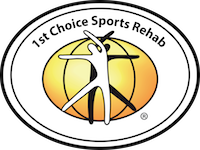by Hamid L. Sadri, DC, CCSP, ICSSD, CSCS, as Published on Active.com
 If you’ve been running long enough, you’ve most likely had to deal with various aches and pains in your feet, knees, hips or lower back. Plantar fasciitis, achilles tendinitis, IT-band syndrome, meniscus tears, runner’s knee, bursitis of the hip or knee, patellofermoral pain syndrome, chondromalacia patella, lower back pain and piriformis syndrome are only some of many conditions an athlete may develop during the course of his or her running career. Overpronation is certainly among the top condintions.
If you’ve been running long enough, you’ve most likely had to deal with various aches and pains in your feet, knees, hips or lower back. Plantar fasciitis, achilles tendinitis, IT-band syndrome, meniscus tears, runner’s knee, bursitis of the hip or knee, patellofermoral pain syndrome, chondromalacia patella, lower back pain and piriformis syndrome are only some of many conditions an athlete may develop during the course of his or her running career. Overpronation is certainly among the top condintions.
Although there are many factors that can contribute to the development of these conditions, improper biomechanics of the body plays a large and detrimental role in the process. Of the many biomechanical elements involved, foot and ankle function perhaps contribute the most to these aches and pains.
During a normal gait cycle, the forward movement is a result of the body’s mass being displaced, putting the body in a forward-falling position. At this time, the lead foot hits the ground preventing the fall, followed by the rear leg as it swings forward, and the cycle repeats with each step.
Once the foot hits the ground its first function is to absorb and help dissipate the shock of impact. This is followed by pronation of the foot so that it can help accommodate the ground contour. The ankle goes into flexion allowing the knee to move forward, and the body follows. The heel raises, and the foot supinates becoming a rigid lever that aids in the pushing action that eventually ends with the toe-off.
Many other intricate and complex components of motion mechanics take place during this process, but for the purpose of this article, this helps to explain the basics.
I’ve see a lot of runners who’ve been told that their particular condition is a result of overpronation. Usually, they’ve had some form of a “postural or gait analysis” done by a coach, trainer or health practitioner, or at a running store. They are typically fitted with stability shoes, off-the-shelf orthotics or costume-made orthotics; the general intention being to prevent excessive pronation of the foot.
Although this is needed in some cases, it should not be done in each and every case when a runner’s foot seems to over pronate. Doing so can and often does result in one symptom going away and another, usually a more complicated one, developing elsewhere.
The following is a brief and simplified reasoning as to why this practice may be flawed if a proper evaluation has not been performed prior to modifying shoes or using orthotics. In a normal functioning ankle and foot there should be 15- to 20-degrees of ankle dorsiflexion present (leg moving forward on top of the foot; or, same as the foot bending backward toward the leg) as well as 60- to 65-degrees of first toe extension (bending backward).
Foot pronation (turning downward or inward) and supination (turning upward or outward) are normal and needed movements for proper function during the gait cycle. All feet must do this and do it well in order to minimize the forces that the body has to deal with during walking or running, and also to create the lever that is needed for propulsion. It is the “excessive pronation” that has been considered a great offender in many of the above referenced conditions. This is when the foot remains in pronation for a longer than normal period of time. This also is what most people try to correct, and often do so improperly.
How many of you have gone to your favorite therapist, doctor or shoe store complaining of some sort of pain? You got a cursory evaluation; were fitted with shoes or orthotics and found that indeed your complaint(s) resolved; but only to find yourself complaining of something else hurting you a few weeks later without having changed anything else in your training.
In order to correctly determine if an overpronation should be corrected using shoes or orthotics, a functional and a structural examination is mandatory. This requires an evaluation of the pelvis, hip, knee, ankle and foot ranges of motion along with at least a lunge and a squat test to examine other elements of motion such as force production, force dissipation, proprioception, stability and balance.
Leg lengths should be examined to rule out inequalities. The pelvis and the spine must be evaluated for proper joint motion and alignment. Last but not least, muscle length and strength ratios may need to be assessed. Without these factors being accurately examined, an improper correction could be made, which will eventually result in other dysfunctions and ensuing pain. One of the common and frequent reasons for overpronation is a lack of normal ankle range of motion. If the foot/ankle is unable to dorsiflex (bend backward) properly, it will not allow the knee to travel forward enough for the body to move its center of mass over the foot, hence making the forward motion of the body difficult.
In such a case, the foot is forced to pronate excessively and as a result the knee will drift medially (toward midline) and the hip will have to excessively adduct (move toward midline) and internally (turn inward) rotate. This of course continues into the rest of kinetic chain and results in other abnormalities in motion mechanics. In this particular (and quite common) instance of poor ankle mobility, correction through shoes and orthotics is often asking for trouble. The overpronation in this case is a needed compensation for a lack of mobility elsewhere in the body. Taking this compensatory element away without first addressing and correcting the true underlying cause will inevitably force compensation (frequently accompanied by pain) in another part of the body.
Here is a simple test you can perform to see if you fall under this particular category:
While in a standing position, place your feet shoulder-width apart. Make sure that your feet and toes are pointing forward and not turned outward (away from the midline of the body). See if you can get into a squatting position that places your knees at or below 90 degrees of flexion (bending) without your heels coming off the ground or your feet externally rotating (turning outward).
If you are unable to complete this test, then there is a good chance your foot pronation is due to inflexibility of your ankles and that is what should be corrected, not the pronating foot. Please note that there are other factors, beyond the scope of this article that can be involved here as well.
Before you consider correcting foot pronation, be sure to have a detailed and complete structural and functional evaluation done by a qualified provider. Not doing so may cost you much more than an improperly fitted shoe or useless pair of orthotics. Remember that the real question to that should be answered is not if you over pronate, but why.
Dr. Sadri has been practicing in Decatur, GA for 25 years and specializes in athletic injuries and rehab. The clinic, 1st Choice Sports Rehab Center, was named “The Best Sports Injury Center in the Southeast” by Competitor Magazine. To subscribe to our newsletter click here. To schedule an evaluation, call 404-377-0011.
